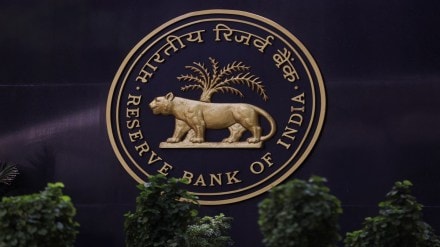The Reserve Bank of India (RBI) has made significant adjustments to lending norms for initial public offering (IPO) financing and loans against shares (LAS), a move that will increase the availability of credit to capital market participants.
The RBI has increased the IPO financing limit from Rs 10 lakh to Rs 25 lakh per person, while increasing the cap for LAS fivefold – from Rs 20 lakh to Rs 1 crore per person. Meanwhile, the regulatory ceiling on lending against listed debt securities has also been removed.
The proposed changes will undergo public consultation.
“These measures are balanced, calibrated, and thoughtfully considered,” said governor Sanjay Malhotra during the post-policy press conference. He said provisions such as project finance and IPO financing hadn’t been revised for years. For instance, the loan limit against shares was last updated in 1998, and the recent revision simply reflects inflation-adjusted realities.
“Over time, the banking system’s ability to manage risks has strengthened significantly, and we have ensured that adequate guardrails remain firmly in place. Our aim is to enhance the credit flow, improve competitiveness, and support economic growth without compromising financial stability,” he said.
The RBI announcement allows banks to recapture flows that had shifted to structured credit providers as well as expand lending opportunities that were traditionally dominated by NBFCs. Retail investors, particularly high net worth individuals (HNIs), may benefit from the increased IPO financing limit, potentially allowing for larger applications and improved chances of allotment, especially in undersubscribed issues. The relaxed LAS limits provide individuals with greater flexibility to leverage their equity portfolios without selling off investments, offering quick access to cash at potentially lower interest rates than personal loans.
What the new RBI limits mean for investors
“The measures set towards regulatory initiatives, including capital market financing, are expected to further increase the credit flow in the market and promote inclusive growth,” said Ajay Kumar Srivastava, MD & CEO of Indian Overseas Bank.
Anil Gupta, senior vice president and co-group head at ICRA, said, “The removal of regulatory caps will empower banks in supporting market growth, though higher financing limits enjoyed by NBFCs will continue to provide them with a competitive edge.”
RBI’s measure is part of a broader effort to ease capital market fundraising, enhance access to credit for investors, and deepen their role in capital market activities. These are designed to widen retail and HNI access to primary issuances and unlock liquidity against equity holdings, aligning with the broader Viksit Bharat 2047 agenda of credit deepening.
Broader regulatory alignment and market impact
Last month, Sebi introduced sweeping changes to IPO norms for large issuers, including a phased dilution for minimum public shareholding (MPS), and expanded anchor investor participation. Sebi’s aim is to encourage mega listings and stabilise post-IPO price discovery.
Together, these reforms reflect a strategic convergence, with RBI enabling credit flow to investors and Sebi recalibrating market entry for issuers. The result is expected to bring about more inclusivity, liquidity and resilience in the capital market ecosystem.
While some analysts are positive, others note that the current allocation mechanism might limit the practical impact on IPO allotment chances for higher applications. However, the overall belief is that greater participation from retail and institutional investors, especially with a record $8 billion anticipated from IPOs in the final quarter of 2025, will get a boost.
